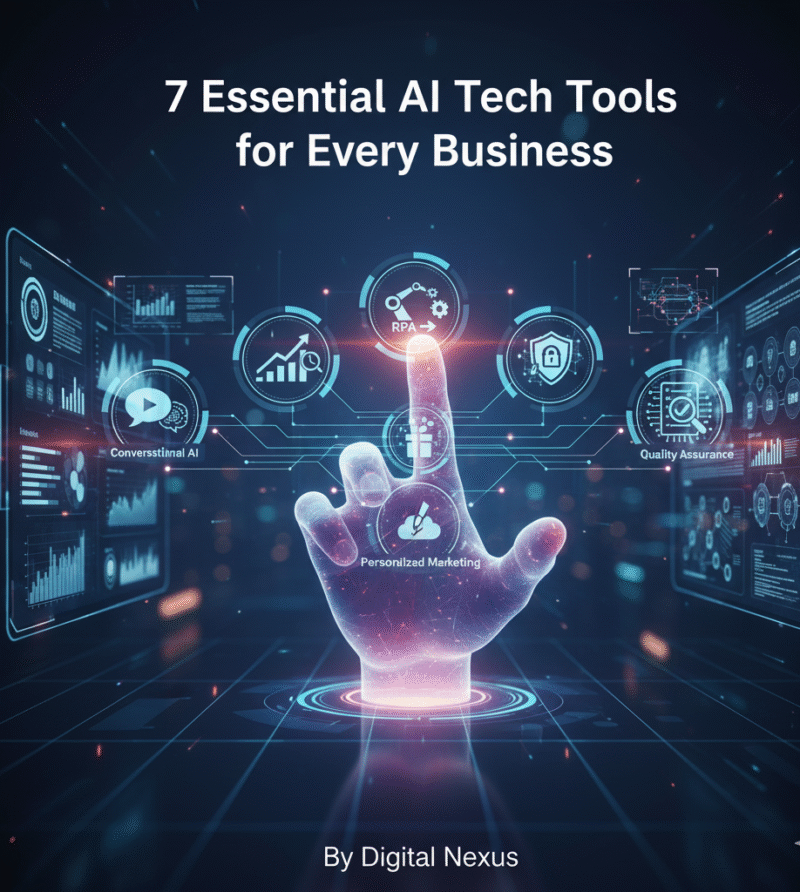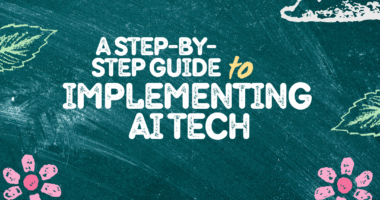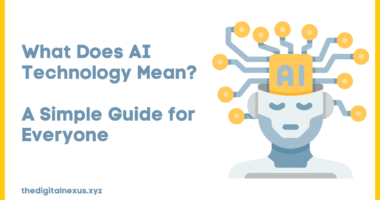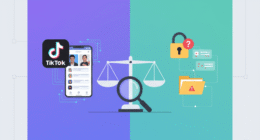In an increasingly competitive global marketplace, the distinction between thriving and merely surviving often hinges on technological agility. Artificial intelligence, once a futuristic concept, has rapidly evolved into a pragmatic suite of tools that, when wielded strategically, can revolutionize business operations from the ground up. This isn’t about replacing human ingenuity, but rather augmenting it, enabling unprecedented efficiencies, deeper insights, and more personalized customer experiences. For businesses of all scales, from agile startups to established enterprises, integrating AI is no longer a luxury—it’s an imperative for maintaining relevance and unlocking sustainable growth. Let’s delve into seven indispensable AI tech tools that every forward-thinking business ought to consider.
1. Conversational AI Platforms: Beyond Basic Chatbots
The era of clunky, script-bound chatbots is rapidly receding. Modern conversational AI platforms represent a significant leap forward, offering sophisticated natural language processing (NLP) capabilities that allow for remarkably human-like interactions. These aren’t just for answering frequently asked questions; they’re becoming integral components of customer service, sales enablement, and internal support systems.
Empowering Engagement and Efficiency
Imagine a scenario where your customers receive instant, accurate, and personalized support 24/7, without overburdening your human agents. This is the promise of advanced conversational AI. These platforms can understand complex queries, gauge sentiment, and even perform actions like scheduling appointments, processing orders, or guiding users through troubleshooting steps. For sales, they can qualify leads and provide tailored product information, freeing up human sales representatives to focus on high-value interactions. Internally, they can streamline HR queries, IT support, and knowledge retrieval, ensuring employees get immediate answers without disrupting their workflow. The real magic lies in their continuous learning—the more they interact, the smarter and more effective they become, driven by sophisticated machine learning algorithms that refine their understanding and responses over time. This transformative capacity elevates the user experience while dramatically reducing operational costs.
2. Predictive Analytics & Business Intelligence Tools: The Foresight Advantage
Data, in its raw form, is merely noise. It’s only when structured, analyzed, and interpreted that it transforms into actionable insights. AI-powered predictive analytics and business intelligence (BI) tools are the alchemists of this transformation, unearthing patterns and forecasting future trends with remarkable accuracy.
Decoding Tomorrow’s Trends Today
These tools move beyond descriptive analytics (what happened?) to prescriptive analytics (what should we do?). By crunching vast datasets—customer behavior, market fluctuations, operational metrics—they can predict future sales trends, identify potential risks in supply chains, forecast inventory needs, and even anticipate customer churn. This foresight enables businesses to make proactive, data-driven decisions rather than reactive ones. Marketing campaigns can be precisely targeted, resource allocation optimized, and potential problems mitigated before they escalate. Instead of relying on gut feelings or historical averages, businesses gain a clear, evidence-based roadmap for navigating complex market dynamics. The competitive edge here is undeniable: acting on informed predictions allows businesses to stay several steps ahead of their rivals.
3. Robotic Process Automation (RPA) Solutions: Automating the Mundane
Many business processes are still mired in repetitive, rule-based tasks that consume valuable human time and are prone to error. Robotic Process Automation (RPA) isn’t about physical robots, but rather software bots designed to mimic human interactions with digital systems, automating these tedious and time-consuming workflows.
Unleashing Human Potential from Tedium
Think about data entry, invoice processing, order fulfillment, or report generation. These are prime candidates for RPA. Software bots can log into applications, extract and input data, generate reports, and even communicate with other systems, all at speeds and accuracies far exceeding human capabilities. The benefits are multifaceted: significant cost savings through reduced manual effort, drastic improvements in accuracy, faster processing times, and enhanced compliance due to consistent execution. Critically, RPA frees up human employees from monotonous, low-value tasks, allowing them to redirect their talents towards strategic thinking, problem-solving, and creative endeavors that genuinely require human intelligence and empathy. This redistribution of effort fundamentally elevates the role of human capital within the organization.
4. AI-Powered Cybersecurity Solutions: Your Digital Guardian
The digital realm, while replete with opportunities, is also a battleground for cyber threats that are growing increasingly sophisticated. Traditional cybersecurity measures often struggle to keep pace. AI-powered cybersecurity tools offer a dynamic, adaptive defense mechanism that learns and evolves.
Proactive Threat Detection and Response
Unlike static firewalls or signature-based antivirus software, AI cybersecurity solutions employ machine learning to continuously analyze network traffic, user behavior, and system logs. They can detect anomalies that indicate novel threats, identify phishing attempts, predict potential attack vectors, and even automate response actions. This capability is crucial for identifying zero-day exploits (previously unknown vulnerabilities) that conventional systems would miss. For instance, an AI might flag an unusual login attempt from a new location at an odd hour, or detect malware trying to infiltrate your systems before it can cause damage. This proactive threat intelligence and adaptive defense ensure that your valuable data and infrastructure are protected by an intelligent shield that constantly learns and reinforces itself against evolving digital adversaries.
5. Personalized Marketing & Recommendation Engines: The Tailored Experience
In an age of endless choice, generic marketing messages fall flat. Consumers now expect highly personalized experiences. AI-powered marketing and recommendation engines are the architects of this individualized engagement, driving relevance and conversion.
Crafting Bespoke Customer Journeys
These tools analyze vast amounts of customer data—browsing history, purchase patterns, demographic information, social media interactions—to create highly granular customer profiles. Based on these profiles, they can deliver hyper-targeted advertisements, recommend products or services with uncanny accuracy, personalize website content, and even dynamically adjust pricing or offers. For an e-commerce site, this means suggesting items a customer is genuinely likely to buy. For a content platform, it’s about surfacing articles or videos that truly resonate. This level of personalization not only enhances the customer experience, making them feel understood and valued, but also significantly boosts engagement rates, customer loyalty, and ultimately, sales. It transforms mass marketing into millions of individualized conversations.
6. AI-Driven Content Generation & Curation Tools: Scaling Communication
Creating compelling, relevant content is a perpetual challenge for businesses. AI has emerged as a powerful ally, not just for automating content creation, but also for intelligent curation and optimization.
From Idea to Impact: Augmenting Content Strategies
These tools can assist in various ways: generating initial drafts for articles, marketing copy, product descriptions, or social media posts based on given prompts and keywords. They can also help curate relevant industry news, summarize lengthy documents, or even translate content into multiple languages with impressive fidelity. Beyond creation, AI aids in optimization: analyzing readability, suggesting SEO improvements, and predicting content performance. While human creativity and strategic oversight remain paramount, these tools significantly accelerate the content pipeline, allowing marketing teams to scale their output, maintain consistency, and reach broader audiences more efficiently. This augmentation ensures that businesses can sustain a vibrant online presence without being overwhelmed by the demand for fresh material.
7. AI for Quality Assurance & Anomaly Detection: Precision in Operations
Maintaining high standards of quality and swiftly identifying deviations from norms are critical for operational excellence across industries. AI tools are proving invaluable in automating these meticulous and often labor-intensive processes.
Ensuring Perfection and Preventing Problems
In manufacturing, AI-powered computer vision systems can inspect products on an assembly line for defects with far greater speed and accuracy than the human eye, catching microscopic flaws that would otherwise pass undetected. In finance, AI algorithms can monitor transactions in real-time, instantly flagging fraudulent activities or unusual patterns that might indicate money laundering. For software development, AI can analyze code for vulnerabilities or performance issues. In IT operations, it monitors system logs and network performance, identifying anomalies that could signal impending outages or security breaches. By automating anomaly detection and quality assurance, businesses can dramatically reduce errors, prevent costly recalls, safeguard assets, and ensure consistent delivery of high-quality products and services, bolstering trust and operational integrity.







